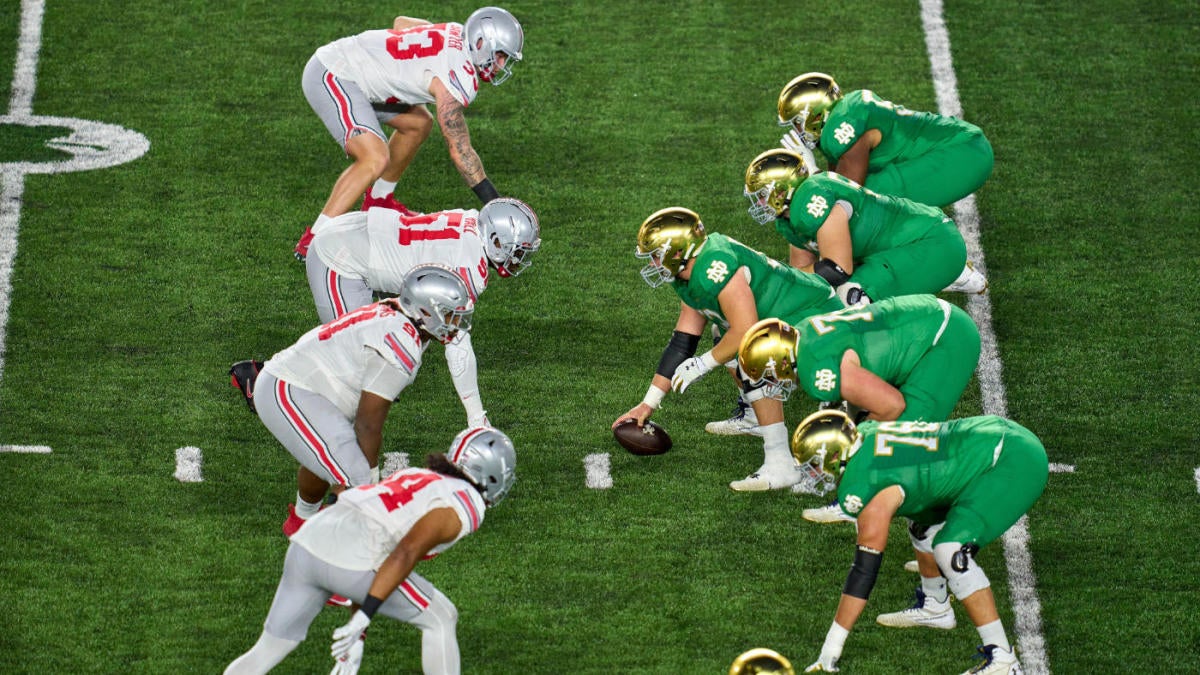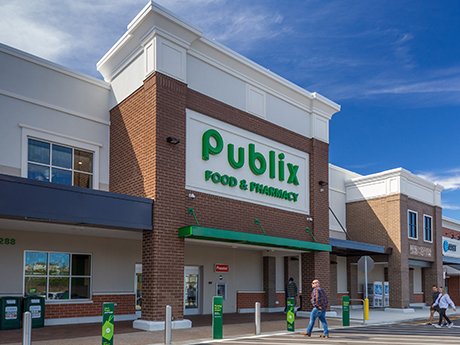Kansas City faces a new economic ‘border war’ as sports and stadium deals loom
More than five years ago, Kansas and Missouri declared a truce.
The two states had for years engaged in a bloodletting competition to lure businesses to their side of the Kansas City region — handing out lucrative incentives to move a corporate headquarters just a few miles across the state line.
These deals brought no new jobs to the region. They sacrificed millions in taxes that could have gone to hire more teachers, pave more roads or invest in public safety. They did nothing to improve the regional economy.
It was, as many called it, a race to the bottom.
Suddenly, that race came to a halt. In 2019, the governors in both states recognized the futility of these battles and agreed to stop the poaching. Since then, most economic development officials in the region say, the truce has worked.
“Missouri and Kansas have been able to really focus their energies and resources towards growing new opportunities for the region,” said Tim Cowden, president and CEO of Kansas City Area Development Council, “and not wasting time and resources incentivizing companies to move back and forth across the state line.”
A recent study conducted by Brookings Metro underscores why the states shouldn’t waste those resources. The study found that the Kansas City region’s economic output is almost evenly split on both sides of the state line, an anomaly among other multistate regions.
What’s more, the metro’s total GDP significantly boosts each state’s economy. Of Missouri’s total GDP, nearly a fourth comes from the Kansas City metro. Kansas, in turn, gets more than a third of its total from our region.
“Both states,” said Amy Liu, presidential adviser and senior fellow at The Brookings Institution, “are highly co-dependent on the success of the Kansas City metro.”
Less state line competition
With 14 counties, 119 cities and a state line, it’s easy to understand why metro Kansas City may find it hard to work as one region when it comes to attracting businesses. Each of these jurisdictions, after all, is hungry for jobs, tax revenue and overall economic growth.
Still, Cowden said, an organization like KCADC aims to “make those lines disappear.” When recruiting businesses to the area, he said, it does not direct them to a specific city.
“Our role is to position the KC region against other regions,” he said.
Joe Reardon, president and CEO of the Greater Kansas City Chamber of Commerce, agreed.
Companies are less concerned about tax breaks, he said.
“They’re more interested in the fundamentals, like what kind of workforce do you have?” Reardon said.
Vaughn Wheat
/
The Beacon
But if a place like Wyandotte County has a chance to use incentives to attract a business, why shouldn’t it? In fact, even with the truce, the county and its neighbors across the region still strike deals with businesses in nearby cities and counties.
The difference today, said Greg Kindle, CEO of Wyandotte Economic Development Council, is those businesses are the first to broach the idea of a move. And even then, they aren’t, he said, asking for anything more than what the county typically gives to qualifying businesses.
Consider Mies Family Foods, a family-run business that will be moving from Missouri back to Kansas, where it got its start. Earlier this year, Mies was looking for a larger site and turned to Wyandotte County because that’s where the owners live.
The county offered Mies its standard 50 percent tax abatement. That, coupled with an attractive site near Interstates 70 and 635, was enough to convince Mies to make a $15.6 million investment and bring 51 employees to Kansas. When the abatement ends, the property will generate $200,000 a year in taxes.
“You look at that and say, does that qualify as a border war?” Kindle said. “Well, they had a connection to Kansas and wanted to move.”
When the stakes change
A small business like Mies isn’t likely to attract suitors willing to do all it takes to woo them to a new state. It’s highly unlikely that the governor is going to show up at their ribbon cutting.
But the higher the stakes, the more fragile the truce could become. The reality is the cooperation of both states will always be tested whenever the temptation to win a prized possession proves too great.
The Chiefs and Royals are the latest prize du jour.
When Jackson County voters rejected a proposed ⅜-cent sales tax to fund a new Royals stadium and improvements to Arrowhead Stadium, Kansas legislators immediately dangled the prospect of STAR bond incentives to attract one or both teams to their side of the state line. Missouri pledged to counter with its own deal, but it has yet to do so.
So it goes. Vast sums of public money offered in exchange for the hope that a professional sports team will boost the local economy. This despite the fact that study after study shows that, on balance, the subsidies offered to major league sports franchises rarely, if ever, deliver that boost.
Still, let’s say a new stadium actually would deliver a net economic gain. Where would those dollars go?
Employees at the new stadium would likely live in both Kansas and Missouri. It’s true that fans in one state would be spending their money in another, generating sales taxes there. But the employees of those businesses would come from across the region and then likely spend their income and pay their taxes in their state of residence.
Each team’s sports gear would continue to be sold across the metro.
“In the end,” Liu said, “the region has to benefit regardless of where a stadium ends up.”
And the region, certainly, does not want to lose either the Royals or the Chiefs. Reardon said that even if one or both teams move to Kansas, the truce will remain because the region will have kept its prized teams.
“They don’t have to stay here,” he said. “It’s not Kansas versus Missouri. It’s also the region versus other cities.”
Cowden said that the April vote created a “market opportunity” that has sparked interest inside and outside the region. But he’s confident that both the Royals and Chiefs, no matter where they land, are committed to staying in the Kansas City area and won’t threaten to leave.
“There are many examples of owners of sports franchises, far and wide, who have held their regions hostage,” he said by email, citing the example of the St. Louis Rams leaving for Los Angeles. “I imagine if you ask most people in St. Louis, they would say losing the Rams and the NFL was a major blow to their collective psyche and esteem as a major U.S. city.”
Acting as one
If nearly all sports fans across the metro are loyal to the Royals and Chiefs, and if our pride as a region is anchored, in part, by these teams, then why not act as one region to keep them here? Would it be possible, for example, to ask voters across the region to approve a sales tax for the stadiums instead of placing the burden on just one county?
History suggests not. In 2004 voters rejected a Bistate II sales tax proposal modeled after the successful vote to collect a sales tax for Union Station renovations. Of the nearly two dozen officials interviewed for this series, none was eager to revisit a bistate tax. Some found the concept cumbersome; others thought it would be a tough sell.
But Kansas City is demonstrating that it’s possible to come together for another major sports attraction: World Cup soccer matches.
Several years of a coordinated bistate campaign paid off in 2022 when FIFA announced that Kansas City would be one of 11 American cities to host the matches. After that announcement, Kansas and Missouri have joined forces to help finance the event. Missouri will contribute $52 million, and Kansas will add about $28 million spread over two years.
The Kansas contribution is especially significant, given that the actual matches and FIFA’s signature “Fanfest” event will take place in Kansas City, Missouri. Some legislators questioned whether the state’s investment would pay dividends. Others argued that they needed to keep in mind that both sides of the state line would reap economic benefits.
The six matches played here will take place in Missouri, at Arrowhead. Organizers have identified three potential base camp locations for the tournament, two possibly in Kansas. Teams will choose their home base with a hotel and practice facility following the FIFA Final Draw later this year.
And, of course, fans will spread out all across the metro and beyond, spending their money on lodging, food and souvenirs in Kansas and Missouri. That’s an estimated 650,000 fans over a nearly four-week period.
“That’s a huge influx of people, and we’re going to need the state’s help,” said Kansas Rep. Pam Curtis, a Democrat from Wyandotte County who voted for the World Cup appropriation. “If we maximize that opportunity and sell the region and Kansas, hopefully a lot of those people will return.”
The challenge now is demonstrating to the world that our region is up to the task of hosting six matches on the world’s largest stage.
Led by the newly created nonprofit organization KC2026, preparations for the event are underway. Committees with bistate representation are overseeing work to significantly boost our security and public transportation, and to ensure that local businesses benefit from the event’s estimated $650 million economic impact.
Organizers understand that a lot is at stake, and that people near and far will be watching. Those eyes will be especially vigilant after a shake-up at KC2026 earlier this year when its director abruptly resigned.
Public transportation providers will be under pressure to carry the hundreds of thousands of visitors to and from the airport, to their hotels, restaurants and shops. The area’s public safety infrastructure will have to prepare for everything from crowd control to a terrorist attack.
The event, in other words, will test the region’s ability to coordinate resources from dozens of jurisdictions to manage the World Cup while also ensuring that local residents can go about their days with minimal interruption.
To pass that test, KC2026 is setting a high bar.
Its transit goal, for example, is to double the region’s transportation capacity — at least temporarily — even if that means leasing additional buses.
“We want to use the World Cup to create a blueprint for regional transit,” said current CEO Pam Kramer.
In the process, Kramer wants the World Cup to showcase how the Kansas City region is stronger when it brings its disparate jurisdictions together for a common cause. That’s how Kansas City landed the World Cup in the first place, she said, and how it must continue while preparing for it.
“The key is for us to look at Kansas City as the way residents here live in it, and also how visitors experience it,” Kramer said. “And I think they all experience it as a region.”
This story was originally published by The Beacon, a fellow member of the KC Media Collective.
Related
Ohio State vs. Notre Dame game prediction, odds, CFP National…
And then there were two. The inaugural 12-team College Football Playoff is set to crown
New Orleans Saints ranked bottom-3 in 2025 offseason assets
The New Orleans Saints are coming off of their worst season in a long time and don’t have much going for them this offseason in looking to improve. Pro Footba
Two Colts players among ESPN’s ‘real MVP candidates’ from 2024
Seth Walder of ESPN put together his list of the top 100 ‘real MVP candidates’ from the 2024 season, and included were two members of the Indianapolis Colts
Sheffield Wednesday: Blades move for Shea Charles ‘not a wind…
A potential move by Sheffield United for on-loan Wednesday midfielder Shea Charles is "not a wind-up," says Blades boss Chris Wilder.The 21-year-old Northern Ir













